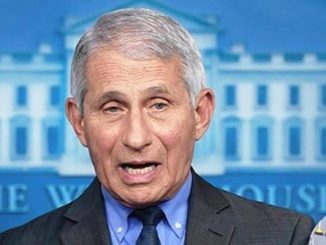

Turban is being used as accessory by the fashionable ones also to symbolize empowerment, equality and self-expression but it is primarily sartorial trend, not a religious practice. In India the girls have started donning the traditional safa alongwith other baratis in Rajasthan, Maharashtra etc. It is not now a symbol of religious integrity and “izat”, as the traditional male turban used to have.
Turban perhaps is the only item of the human attire which has many folds of history and mystery underneath its layers. It had attained hundreds of connotations and interpretations as far as its styles, colours, names, shapes and sizes are concerned. It had acquired protective, decorative, cultural, religious, ethical, nationaland professional symbolism. It had “kingly” as well “raggly” status in different times of history in the different regions. In many cultures, it became symbolic of temporal authority while in some others it attained the spiritual aura, and thus signified power.From “murasa”(muVwsw) it progressed to be the base of kingly crown and empirical regalia in many cultures of Asia and Africa. It adorned the authoritative and spiritual heads with different namessuch as turban, turbante, dulband, pheta, pag, pagree, sapha, dastaar, cheera, dumala etc. etc. The nomenclature is basically embedded in Persian as it is considered that turban started from Arab countries.Clothing has always been the identifier of the different groups comprising any individual society, turban happened to be the prominent one. It has been a distinctive signifierin the sign systems of different societies from primitive to ultra-modern times. According to The Encyclopaedia of Sikhism, “As a form of head dress, it is of Semitic origin and was an essential part of the Israeli High Priest’s uniform in Moses’day,1300 BC, as stated in the Old Testament (Exodus,28:4). In India, it is to be seen as worn by men depicted in the Ajanta caves (200 B.C.) and on the Sanchi Gateway (150BC)”.
This happened in India duringthe Moghul period that the turban became a symbol of royalty and with that came the bigotry also to issue the dictates by the ruling class that Hindus were not allowed to wear turbans nor werethey allowed to ride the horses, which in fact was considered the privilege of the ruling class only. As a matter of tradition all the Sikh Gurus, like all the Pandits and other seers ofthe Hindu religion, used to adorn distinctive turbans. When this significant item of dress was banned in the later part of the 17th century along with the other draconian policies towards the mission of Sikhism, Guru Gobind Singh took the cudgels against this injustice and religious bigotry. In 1699, when he initiated the Sikhs into the new fold of Khalsa and brought about a great transformation, turban became an inseparable part of the Khalsa as it was ordained that the Sikhs must keep the Kes (hair) intact and unshorn. Turban became Dastar in Sikh language and literature. “Saabat surat dastaar sira” became the benchmark of the Khalsa. Though turban, basically symbolized masculinity and martiality, yet Khalsa never discouraged the women from being turbaned. Mai Bhago is a glaring example of the Dastaardhari Sighani, who had all the masculine propensities and Guru Ji showered all the blessings on her. Even some paintings painted by some Britishers in 17th and 18th century show Sikh women in traditional Nihang dastaars on their heads.
However, most of the Sikh women in Punjab and other states of India continued to observe their Sikh religion with their chunis or dupattas on their heads, even after being Amritdhari. It was Akhand Kirtani Jatha which started initiating the Sikh women in Khalsa fold,which emphasized the strict discipline of the Rehat and ordained the female Sikh initiates to have jura and turban. Both men and women started adorning dumalas over their heads to cover their unshorn hair, keski being the smaller turban under the bigger one. It is to be observed that Sikhs don’t just tie the turban or wear the turban, they adorn it or don it: ਦਸਤਾਰ ਬੰਨ੍ਹਦੇ ਨਹੀਂ, ਸਜਾਉਂਦੇ ਹਨ।
Anyhow, many of the unmarried girls who used to get into such type of observances, have to face a peer pressure from the society as it was considered something queer for girls to wear the turban and lose the feminine look.It happened under the impact of the globality only that the Sikh girls started daring the peer and queer pressure. The 21st century has witnessed a rising graph as far as the trend of turban tying in Sikh girls and women is concerned. The graph is still going up. It has happened because of many factors happening around, among them the most important ones being sense of equality, individual identity, Sikh essentialism, post-colonial choice and being fashionable. In Europe and America, turban got very popular among women in the last two decades in fashion and modelling. Its position with the diasporic Sikh girls is altogether different who wear it for religious considerations.The girls who have started doning dastaars in daily routine prefer domalas which has almost become a distinguishable iconic mark of female Sikhism as no other community in the world other than Sikhs wear domalas. These girls with domalas have a strong will to have equality, feminine identity and women empowerment. There is a long list of such Amritdhari successful Sikh girls who have achieved the echelons of empowerment. Many of them had to fight with the law of those lands where they are living to get the turban allowed on official duties. Turban proved to be a challenge for them.
Palbinder Kaur, wearing a domala, has achieved the list of “first” by becoming the first Amritdhari turbaned Judge of a supreme court in Canada. Prior to that she was a human rights activist. Simerpal Kaur has become the first Amritdhari Sikh woman who serves in Australian police with her domala. Arpinder Kaur has registered her name as the first ever turbaned Sikh woman to be a pilot in United States. Similarly, Sukhdeep Kaur is the first female Sikh prison officer in Hong Kong. Twenty-two-year-old Gursoch Kaur has become the first turban-wearing Sikh woman in New York Police Department. All of them, including a number of others, scattered all over the globe, have been steadfast in performing their duties with turbanas their head gear because of their religiosity and spirituality. Yet it is not true of all the girls wearing turban in Punjab or even abroad. Many of the girls are adorning turban just as a matter of fashion. At global level, turban-tying is a trend among Muslim as well as European women. As turban has got respectability and acceptability, more girls in Indian Punjab now feel comfortable with this head dress. The concept of being beautiful has changed. Many girls with domala turban on their heads appear more beautiful and handsome with their cherubish cheeky faces. Media has also started encouraging them to wear turbans, as this progression from Phulkari to Domalla is very interesting, catchy and attractive. Suchgirls with turban on their heads have become smarter by not having chuni or dupatta which had been a big nuisance, particularly for the working women, managing its loose ends all the time. Nevertheless, the Amritdhari Sikh girls are seen having dupatta also alongwith the domala for keeping the modesty of covering their bust.
Turban is being used as accessory by the fashionable ones also to symbolize empowerment, equality and self-expression but it is primarily sartorial trend, not a religious practice. In India the girls have started donning the traditional safa alongwith other baratis in Rajasthan, Maharashtra etc. It is not now a symbol of religious integrity and “izat”, as the traditional male turban used to have. It is more a fashion, a fun or a fad to look different from others, to be photo genic. There is nothing new and unique in this trend. In fact, it is the revival of the earlier trends of wearing exotic head-dress by European women as evening dress or as party wear. The first documentation of the turban being worn as a fashion accessory was seen in the iconic Dutch painting “Girl with a Pearl Earring”, painted by Vermeer in 1665. There have been revivals of turban-trend time to time from 15 century to 19th century. It was revived in 1910s-20s by fashion designer Paul Poiret. In the last two decades of 21st century, turban has again gathered popularityin fashion prades on the ramps. However, the latest trends are being frowned at by the clergyand the elders because now the turbans being worn by the showbiz beauties (many of them are morally controversial), are more of religious styles rather than the traditional draped variations or head wraps. This mixing up of the religious symbolism to be sexy and seductive is being disliked by the Sikh elders also.
To conclude, we can safely observe that the girls or women who are donning turban might be doing it for hundreds of reasons, but one thing is crystal clear that the turban on the head of a Sikh female doesn’t always signify being fundamentalist or spiritualist or religious in Sikhism.
(The author is a retired college Principal. He has written hundreds of articles about Punjabi culture and Sikh history in Punjabi as well as in English. Out of 12 books published so far, Dastan-e-Dastar, Balhari Kudrat Wasiya and Katak Ke Vaisakh? Ke Dovein? have been well received by the Punjabi readers. The fourth edition of Dastan-e- Dastaar is being awaited. To pen down write-ups of Dastaardhari “firsts” at National and International level is his first love.
He lives in Village Nadala in Kapurthala district of Punjab, India. He can be reached at nadalaghuman@gmail.com. (Cell) 97798 53245.)





Be the first to comment